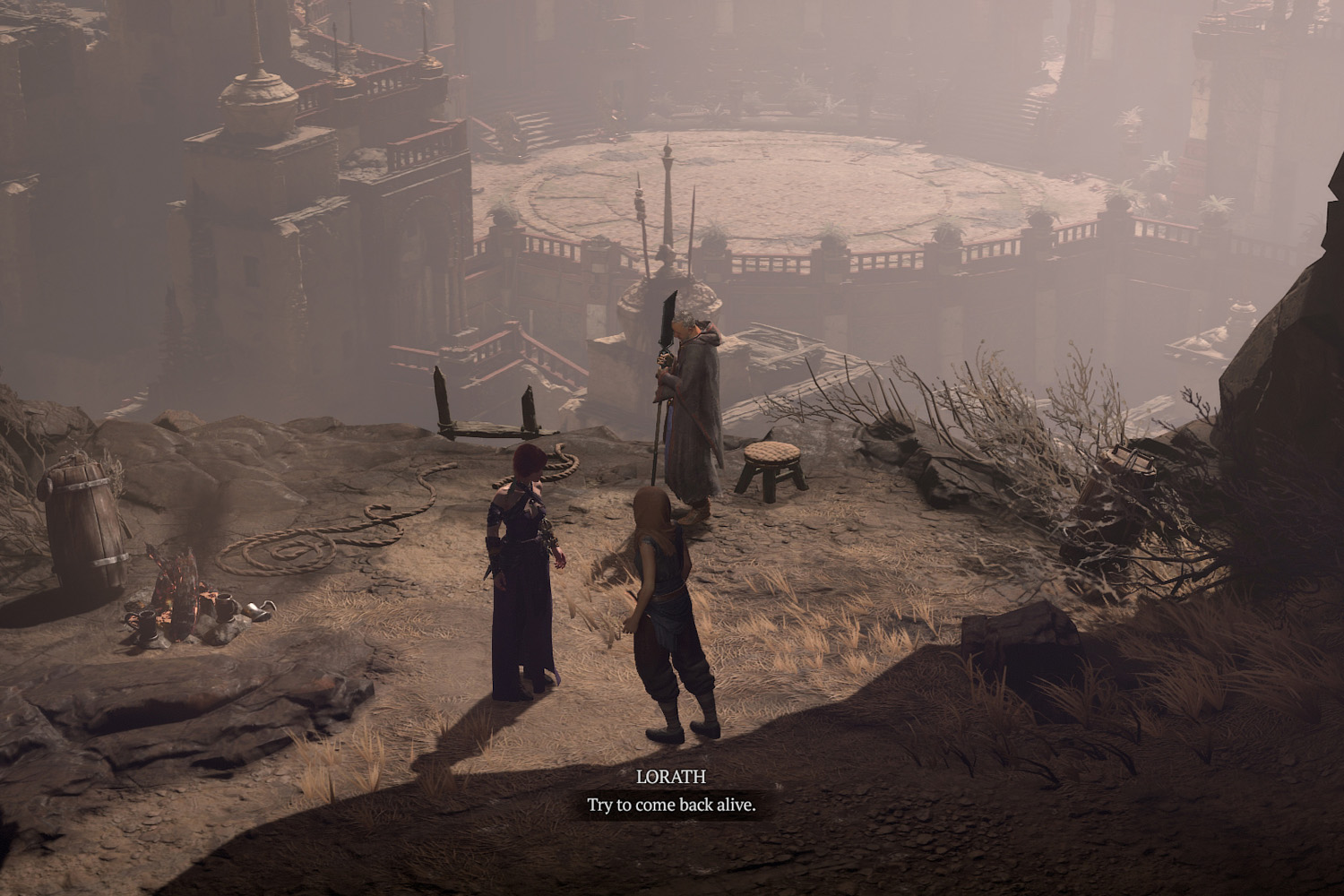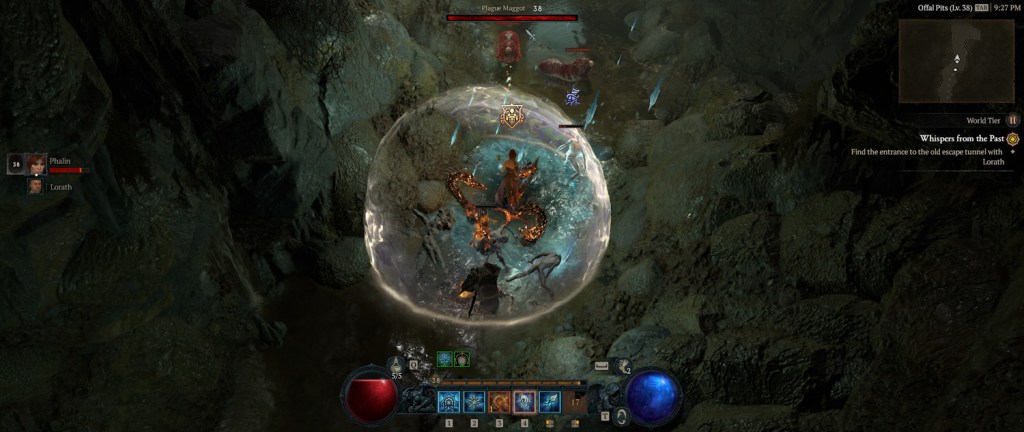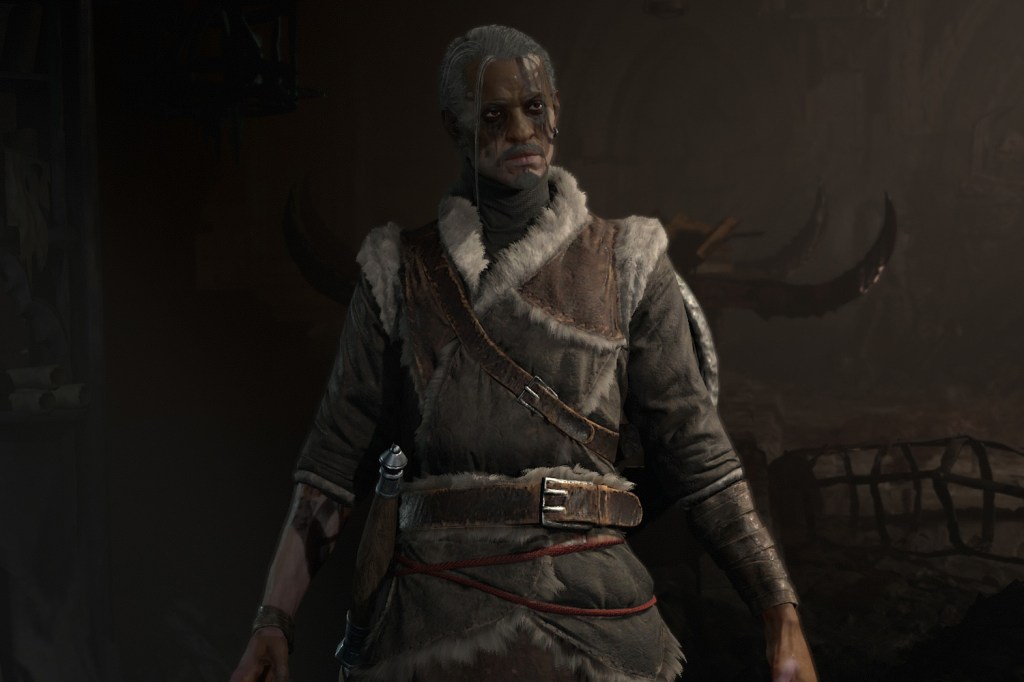Diablo IV review: hell is other adventurers
MMO-inspired gameplay refreshes Blizzard's dungeon crawler

What is it about turning small numbers into bigger numbers that gamers find so primally compelling? Countless titles have co-opted the formula, but it was arguably perfected by the Diablo series. Big-name looter shooters like Destiny and Borderlands wouldn’t exist as they do today without the dark fantasy dungeon crawler’s influence. For the fourth entry things have gone full circle, with developer Blizzard borrowing some ideas from those imitators.
That’s right, Diablo IV has gone live service, with all of the server-related pitfalls that entails. There’s a world map now, filled with other players as well as unending hordes of demonic enemies; skills and abilities are far more customisable; and the story is partly non-linear. It all adds up a big shakeup for the series, and comes off the back of mobile entry Diablo Immortal going down worse than a fart at a funeral with diehard fans. Has Blizzard pulled off something heavenly? Or should Diablo IV be dragged down to hell?
Don’t lose your lunch
Diablo IV’s version of iconic series location Sanctuary is grim. Oppressively so, even. The barren deserts, gloomy forests and seemingly endless dank dungeons feel like a direct response to online criticism about its predecessor not bering as gothic or graphic as the original game. “You want dark?” a rattled Blizzard designer probably said, “I’ll give you dark”.
They might all be dimly lit, but every new location oozes atmosphere: your character leaves deep trails as they trudge through snow drifts, leaps over crumbling chasms and stumbles through cobweb-covered crypts, with dynamic lighting casting dramatic shadows as you wander in front of sconces or burning pyres. Even the major settlements, which aren’t quite so grubby, are filled with down-on-their-luck peasants keen to share their particular plight with you.
It all looks stunning, especially when you take the time to appreciate all the little things. Every enemy is incredibly detailed, and you can see your character’s individual equipment pieces change in real time as you update your inventory. A new close camera angle lets you zoom right in to really take in your environment.
The plot is equally bleak. The opening cinematic, which sees some unwitting grave robbers tricked into unleashing demonic antagonist Lilith from eternal imprisonment, gives us major Hellraiser vibes. Pretty soon she’s possessed an entire village, convinced them to club the local priest to death, then kidnap you ready for a ritual sacrifice. And that’s just the opening ten minutes. It doesn’t let up on the gore and viscera, but while Diablo IV takes itself even more seriously than previous entries, it never becomes properly scary. Or you can skip the lot if you just want to get on with the grind – of which there’s plenty.
Uncharted territory
Instead of individual maps, Diablo 4’s Sanctuary exists as a single giant explorable realm. The world map slowly fills in as you explore, unlocking fast travel waypoints to cut down on backtracking. Aside from a few locked story locations (and some overlevelled monsters you won’t be ready to take on yet) there’s nothing to stop you from trying to see all of it right from the outset, picking one direction and wandering until you reach a dead end. It’s so expansive, in fact, the always-visible minimap doesn’t give you the greatest sense of where to go next. We liked the overlay option seen in Diablo 3, but here you must open the map from the menu. As an always-on game there’s no pause button, so monsters can still attack you while you’re checking where to head next.
Despite the map’s size, there’s no shortage of things to do. Optional side quests can be found in almost every settlement, ranging from collectathons and item deliveries to miniboss battles and even an exorcism or two. Some will even send you to larger dungeons – and once you’re there, you might as well explore the whole thing, right? Each one rewards you with a cache of items, crafting materials or gold, which is often faster than foraging for them yourself. If you like a challenge you can up the difficulty (World Tier) from the off: it certainly upped the ante for our low-levelled sorcerer, making even basic mobs a little tricky until we’d unlocked a few tiers of the skill tree and equipped some better gear.
It’s not quite a fully open world: story quests and subquests often take place in procedurally generated dungeons that are instanced to your party, so while you’ll never play the same layout twice, you’ll also never encounter random players there either. It’s a similar story for the explorable dungeons which unlock skills on completion, and smaller Cellar areas (micro-dungeons that hold a few powerful enemies).
Other adventurers appear regularly as you wander, with the option to group up (essential for the raid boss encounters), but your loot stays yours when playing solo. Post-campaign, the higher difficulty levels and capstone dungeons will definitely need to be tackled with other players until you’ve got end-game gear.
Skills to pay the bills
Being showered by loot as you carve through waves of enemies is as satisfying as ever. It can get properly hectic very quickly as you balance health and mana reserves, keep one eye on your skill cooldowns, and use the dodge ability to escape incoming attacks at the last minute. How you go about that exactly depends on your chosen character class.
The Sorcerer specialises in aggressive area of effect spells, the Necromancer lets multiple minions do the bulk of the work, and Rogues are great for hit and run attacks. Druids can shapeshift as well as cast earth magic, while Barbarians prefer the “hur hur, club go smash” direct approach, tanking any incoming damage and dishing it back swiftly.
They all have expansive skill trees to unlock, which dish out a steady trickle of new abilities and stat bonuses as you level up. It takes time to reach the more powerful skills, but the linear way everything unlocks is far less overwhelming than Path of Exile’s screen-spanning ability grids. Your options are limited in the early game, but you’ll soon be able to mix and match; the only notable restriction is that you’re limited to a single Ultimate-tier ability. Refunding points to invest in other abilities costs gold, but we never found ourselves in short supply. This freeform approach is way less restrictive than Diablo 3, which had two or three end-game builds for each class that comfortably eclipsed the others in terms of damage output or survivability.
That’s all before taking loot into account, too. Legendary items add extra effects to certain skills, turning humdrum attacks into potent monster slayers. Whenever a new item drops we’d jump straight into the inventory and start planning how to adjust our setup for maximum carnage. Our Sorcerer started out specialising in single-hit fireballs, but swapped to ice magic after finding an enchanted ring that boosted the area of effect Blizzard spell.
Reach the level cap and you’ll unlock the Paragon Board, a more complex grid of permanent stat boosts that go far beyond the “+5 movement speed” or “+1 life regeneration” seen in Diablo 3. They help you focus on a particular build, boosting one or two core skills to make it through the tough end-game content.
PC performance and console exclusives
We tested the PC version, which plays brilliantly on a range of hardware. We could crank most settings at 1080p on a gaming PC with a GeForce 2060 graphics card, and the Asus ROG Ally handheld coped well with a mix of medium presets. Steam Deck users can get in on the action with liberal use of AMD’s FSR resolution upscaling (once they’ve gone through the faff of setting up Battlenet on Valve’s machine, anyway).
Two player couch co-op (where one player opening their inventory no longer takes up the entire screen) is a welcome inclusion for the console versions, though we’ve yet to try it out.
Diablo IV verdict
When it comes to grinding for gear in monster-infested pits of despair, none does it better. Diablo IV is an oh-so-satisfying action RPG that will feel reassuringly familiar to returning players, yet even after 30 hours of play still feels like we’ve barely scratched the surface of what’s on offer. It arguably doesn’t have the near-infinite depth Path of Exile addicts would want, but even hardcore fans of previous Diablo games will find lots to like here.
The MMO-like elements don’t intrude too heavily for solo players, and Blizzard had learned its lesson with Diablo 3’s disastrous auction house – the in-game store is strictly cosmetic this time around. We wouldn’t pay £25 for a set of horse armour, but bet plenty of players will.
While we don’t yet know if the seasonal content will keep completionists coming back for more, we can’t argue with the hypnotic combat loop, the gloriously deep build-crafting or the atmospheric world the developers have crafted. It’s one we’ll happily be exploring for a long while yet.
Stuff Says…
Some of the best dungeon crawling you’ll experience, either solo or with other adventurers, and with plenty of depth to keep you coming back for more.
Good Stuff
Gloriously grim atmosphere
Huge map filled with secrets and hectic combat
Skill trees allow for different play styles without being overwhelming
Bad Stuff
You can’t play completely solo
Post-credits lifespan still an unknown












